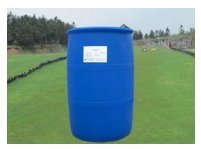The surface viscosity is closely related to the firmness of the surface film. Because the membrane has surface pressure and viscosity, it must be elastic. The higher the surface pressure and viscosity, the greater the elastic modulus. The elastic modulus of the surface adsorption film is very important in the process of foam stabilization.

Surfactant is a main component of detergent decontamination formula. Except for special use, these products are discharged into the environment directly or after being treated by sewage treatment plant. However, the anionic surfactants which are difficult to be biodegraded are the most important in detergents. The massive discharge of surfactant containing wastewater will not only directly harm the aquatic environment, kill the microorganisms in the environment, inhibit the degradation of other toxic substances, but also lead to the reduction of dissolved oxygen in the water, especially the nitrogen and phosphorus containing surfactants will cause eutrophication of the water. When the surfactant in the sewage reaches a certain concentration, it will affect many processes, such as aeration, sedimentation, sludge nitrification and so on.
The mechanism of biosurfactants promoting the degradation of organic pollutants and the interaction between biosurfactants, degradation strains and substrates are not clear. Although biosurfactants promote microbial degradation, they also have some inhibiting factors. For example, when the concentration of some surfactants reaches above CMC, they are toxic to microorganisms, and some biosurfactants can interfere with cell processes. Biosurfactants can also be used as a priority carbon source to compete with the degradation of organic pollutants, which leads to the decline of the degradation rate of pollutants. In addition, surfactants may cause the dispersion of microbial population and lead to different results. These mechanisms need to be further explored. A kind of
In situ remediation, the use of biosurfactants will have a certain toxicity and impact on the indigenous microbial population living in it. In addition, because it can be degraded by microorganisms, its metabolites may be more toxic. Therefore, the existence of biosurfactants may cause some pollution to the environment and increase the burden of environmental pollution. It can be seen that strengthening the research on the potential impact of biosurfactants on the environment and their biodegradation characteristics will provide an important scientific basis for effectively controlling the environmental pollution caused by biosurfactants and making rational use of biosurfactants. In order to ensure the safety of biosurfactant application, it is necessary to carry out comprehensive biosurfactant toxicity and environmental hazard experiments in the field of surfactant solubilization repair.